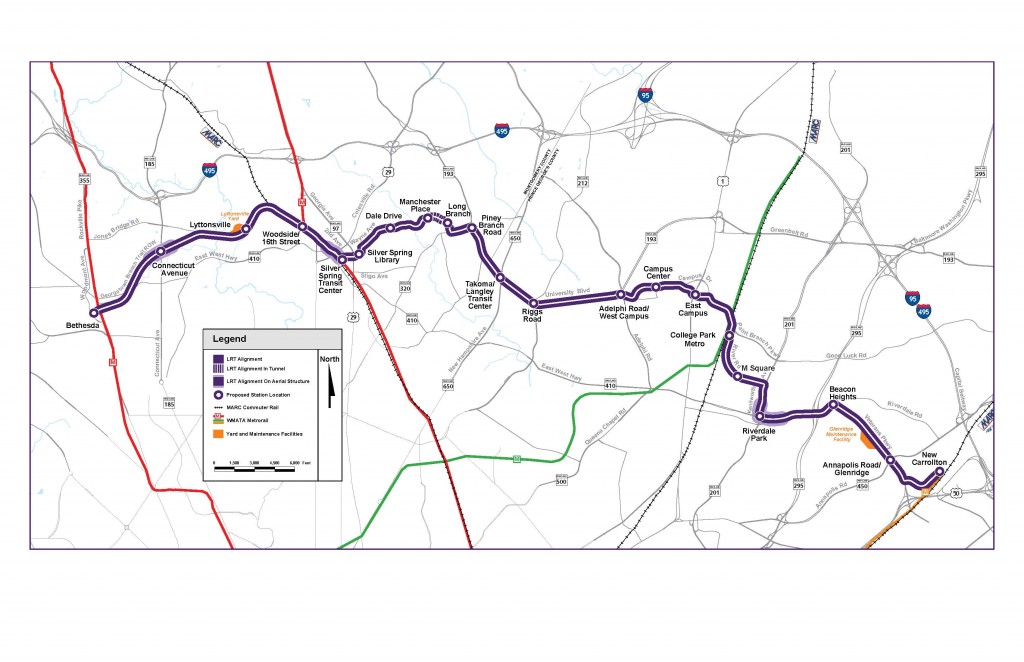 The Purple Line light rail is finally underway in the Maryland inner suburbs around Washington DC, after a 31-year battle by neighborhood residents to get it built. It’s a badly needed light rail connector between two spokes of the Metro heavy rail lines, running through very transit-dependent areas (see map above).
The Purple Line light rail is finally underway in the Maryland inner suburbs around Washington DC, after a 31-year battle by neighborhood residents to get it built. It’s a badly needed light rail connector between two spokes of the Metro heavy rail lines, running through very transit-dependent areas (see map above).
Ben Ross was one of its chief advocates as an activist resident. He summarized some of the lessons the grassroots coalition learned in their three decade fight, which I distill here:
- Democracy still works: grassroots organizing and mobilization defeated well-heeled property owners.
- Think big: the bigger the project proposal, the greater the coalition in support became, featuring an alliance of business, labor, environmentalists, and civic groups as well as transit advocates.
- Go on the offensive: forget the active opponents of a controversial project, mobilize supporters and convince the undecided with a positive message about the many benefits and forget point-by-point rebuttals of their arguments.
- Avoid preemptive concessions: Ross writes, “When the critics object to the project itself, changes they suggest will not end their opposition, and they will make it harder to build support by lessening the project’s value.”
That last bit of advice probably would have been helpful for the Obama White House negotiators on the Affordable Care Act, who accepted numerous Republican amendments on the bill without getting their votes and instead alienated their base supporters from the bill.
Overall, the lessons learned in Maryland with the Purple Line could apply to transit and infill housing backers in almost any community.


